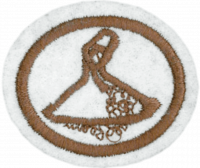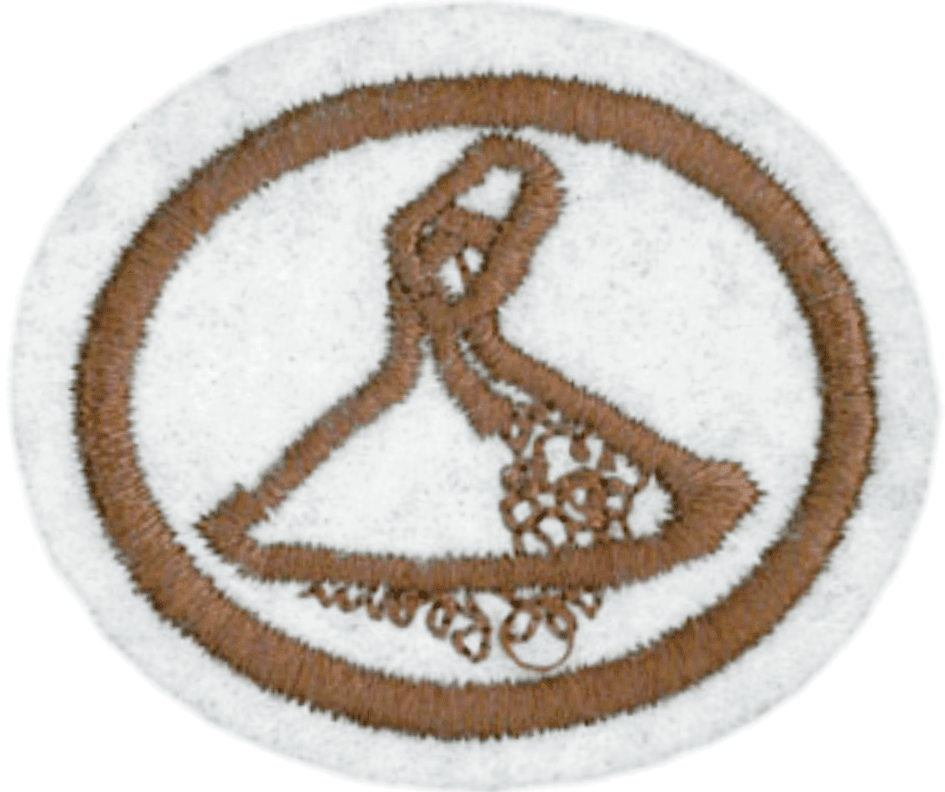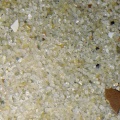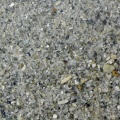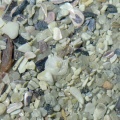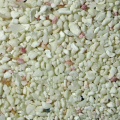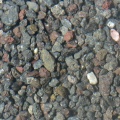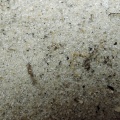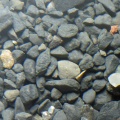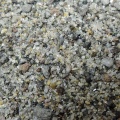Difference between revisions of "AY Honors/Sand/Answer Key/es"
From Pathfinder Wiki
(Created page with "Especialidades JA/Arena/Respuestas") |
|||
| (5 intermediate revisions by the same user not shown) | |||
| Line 15: | Line 15: | ||
{{CloseReq}} <!-- 1 --> | {{CloseReq}} <!-- 1 --> | ||
{{ansreq|page={{#titleparts:{{PAGENAME}}|2|1}}|num=2}} | {{ansreq|page={{#titleparts:{{PAGENAME}}|2|1}}|num=2}} | ||
| − | <noinclude> | + | <noinclude></noinclude> |
| − | </noinclude> | + | <!-- 2. ¿Qué significa el término «arena»? Nombrar dos tipos de arena. --> |
| − | <!-- 2. | ||
| − | |||
| − | |||
{{clear}} | {{clear}} | ||
| Line 26: | Line 23: | ||
{{CloseReq}} <!-- 2 --> | {{CloseReq}} <!-- 2 --> | ||
{{ansreq|page={{#titleparts:{{PAGENAME}}|2|1}}|num=3}} | {{ansreq|page={{#titleparts:{{PAGENAME}}|2|1}}|num=3}} | ||
| − | <noinclude> | + | <noinclude></noinclude> |
| − | </noinclude> | + | <!-- 3. Dar el origen de la arena y qué minerales contiene. --> |
| − | <!-- 3. | ||
| − | |||
| − | |||
{{clear}} | {{clear}} | ||
| Line 41: | Line 35: | ||
{{CloseReq}} <!-- 3 --> | {{CloseReq}} <!-- 3 --> | ||
{{ansreq|page={{#titleparts:{{PAGENAME}}|2|1}}|num=4}} | {{ansreq|page={{#titleparts:{{PAGENAME}}|2|1}}|num=4}} | ||
| − | <noinclude> | + | <noinclude></noinclude> |
| − | </noinclude> | + | <!-- 4. ¿Cuál es la diferencia entre la arena y el suelo? --> |
| − | <!-- 4. | ||
| − | |||
| − | |||
<noinclude></noinclude> | <noinclude></noinclude> | ||
{{CloseReq}} <!-- 4 --> | {{CloseReq}} <!-- 4 --> | ||
{{ansreq|page={{#titleparts:{{PAGENAME}}|2|1}}|num=5}} | {{ansreq|page={{#titleparts:{{PAGENAME}}|2|1}}|num=5}} | ||
| − | <noinclude> | + | <noinclude></noinclude> |
| − | </noinclude> | + | <!-- 5. ¿Qué se entiende por forma, superficie, fractura de grano y tamaño de grano? --> |
| − | <!-- 5. | ||
| − | |||
| − | |||
| − | |||
| − | + | {{clear}} | |
| − | |||
| − | |||
| − | + | {{clear}} | |
| − | |||
| − | |||
| − | |||
| − | |||
| − | + | {{clear}} | |
| − | |||
| − | |||
| − | |||
| − | + | {{clear}} | |
| − | |||
| − | |||
| − | |||
| − | |||
| − | |||
| − | + | {{clear}} | |
| − | |||
| − | |||
| − | |||
| − | |||
| − | |||
| − | + | {{clear}} | |
| − | |||
| − | |||
| − | |||
| − | |||
| − | |||
| − | + | {{clear}} | |
| − | |||
| − | |||
| − | |||
| − | |||
| − | |||
| − | + | {{clear}} | |
| − | |||
| − | |||
| − | |||
| − | |||
| − | |||
| − | + | {{clear}} | |
| − | |||
| − | |||
| − | |||
| − | |||
| − | |||
| − | + | {{clear}} | |
| − | { | ||
| − | |||
| − | |||
| − | |||
| − | |||
| − | |||
| − | |||
| − | |||
| − | |||
| − | |||
| − | |||
| − | |||
| − | |||
| − | |||
| − | + | <noinclude></noinclude> | |
| − | <noinclude | ||
| − | |||
{{CloseReq}} <!-- 5 --> | {{CloseReq}} <!-- 5 --> | ||
{{ansreq|page={{#titleparts:{{PAGENAME}}|2|1}}|num=6}} | {{ansreq|page={{#titleparts:{{PAGENAME}}|2|1}}|num=6}} | ||
| − | <noinclude> | + | <noinclude></noinclude> |
| − | </noinclude> | + | <!-- 6. Definir los siguientes y dar el uso de cada uno: --> |
| − | <!-- 6. | + | <noinclude></noinclude> |
| − | <noinclude | ||
| − | |||
{{ansreq|page={{#titleparts:{{PAGENAME}}|2|1}}|num=6a}} | {{ansreq|page={{#titleparts:{{PAGENAME}}|2|1}}|num=6a}} | ||
| − | <noinclude> | + | <noinclude></noinclude> |
| − | </noinclude> | + | <noinclude></noinclude> |
| − | |||
| − | <noinclude | ||
| − | |||
{{CloseReq}} <!-- 6a --> | {{CloseReq}} <!-- 6a --> | ||
{{ansreq|page={{#titleparts:{{PAGENAME}}|2|1}}|num=6b}} | {{ansreq|page={{#titleparts:{{PAGENAME}}|2|1}}|num=6b}} | ||
| − | <noinclude> | + | <noinclude></noinclude> |
| − | </noinclude> | + | <noinclude></noinclude> |
| − | |||
| − | <noinclude | ||
| − | |||
{{CloseReq}} <!-- 6b --> | {{CloseReq}} <!-- 6b --> | ||
{{ansreq|page={{#titleparts:{{PAGENAME}}|2|1}}|num=6c}} | {{ansreq|page={{#titleparts:{{PAGENAME}}|2|1}}|num=6c}} | ||
| − | <noinclude> | + | <noinclude></noinclude> |
| − | </noinclude> | + | <noinclude></noinclude> |
| − | |||
| − | <noinclude | ||
| − | |||
{{CloseReq}} <!-- 6c --> | {{CloseReq}} <!-- 6c --> | ||
{{ansreq|page={{#titleparts:{{PAGENAME}}|2|1}}|num=6d}} | {{ansreq|page={{#titleparts:{{PAGENAME}}|2|1}}|num=6d}} | ||
| − | <noinclude> | + | <noinclude></noinclude> |
| − | </noinclude> | + | <noinclude></noinclude> |
| − | |||
| − | <noinclude | ||
| − | |||
{{CloseReq}} <!-- 6d --> | {{CloseReq}} <!-- 6d --> | ||
{{ansreq|page={{#titleparts:{{PAGENAME}}|2|1}}|num=6e}} | {{ansreq|page={{#titleparts:{{PAGENAME}}|2|1}}|num=6e}} | ||
| − | <noinclude> | + | <noinclude></noinclude> |
| − | </noinclude> | + | <noinclude></noinclude> |
| − | |||
| − | <noinclude | ||
| − | |||
{{CloseReq}} <!-- 6e --> | {{CloseReq}} <!-- 6e --> | ||
{{ansreq|page={{#titleparts:{{PAGENAME}}|2|1}}|num=6f}} | {{ansreq|page={{#titleparts:{{PAGENAME}}|2|1}}|num=6f}} | ||
| − | <noinclude> | + | <noinclude></noinclude> |
| − | </noinclude> | + | <noinclude></noinclude> |
| − | |||
| − | <noinclude | ||
| − | |||
{{CloseReq}} <!-- 6f --> | {{CloseReq}} <!-- 6f --> | ||
{{ansreq|page={{#titleparts:{{PAGENAME}}|2|1}}|num=6g}} | {{ansreq|page={{#titleparts:{{PAGENAME}}|2|1}}|num=6g}} | ||
| − | <noinclude> | + | <noinclude></noinclude> |
| − | </noinclude> | + | <noinclude></noinclude> |
| − | |||
| − | <noinclude | ||
| − | |||
{{CloseReq}} <!-- 6g --> | {{CloseReq}} <!-- 6g --> | ||
{{ansreq|page={{#titleparts:{{PAGENAME}}|2|1}}|num=6h}} | {{ansreq|page={{#titleparts:{{PAGENAME}}|2|1}}|num=6h}} | ||
| − | <noinclude> | + | <noinclude></noinclude> |
| − | </noinclude> | + | <noinclude></noinclude> |
| − | |||
| − | <noinclude | ||
| − | |||
{{CloseReq}} <!-- 6h --> | {{CloseReq}} <!-- 6h --> | ||
{{ansreq|page={{#titleparts:{{PAGENAME}}|2|1}}|num=6i}} | {{ansreq|page={{#titleparts:{{PAGENAME}}|2|1}}|num=6i}} | ||
| − | <noinclude> | + | <noinclude></noinclude> |
| − | </noinclude> | + | <noinclude></noinclude> |
| − | |||
| − | <noinclude | ||
| − | |||
{{CloseReq}} <!-- 6i --> | {{CloseReq}} <!-- 6i --> | ||
{{ansreq|page={{#titleparts:{{PAGENAME}}|2|1}}|num=6j}} | {{ansreq|page={{#titleparts:{{PAGENAME}}|2|1}}|num=6j}} | ||
| − | <noinclude> | + | <noinclude></noinclude> |
| − | </noinclude | ||
| − | |||
| − | |||
| − | + | <noinclude></noinclude> | |
| − | <noinclude | ||
| − | |||
{{CloseReq}} <!-- 6j --> | {{CloseReq}} <!-- 6j --> | ||
{{CloseReq}} <!-- 6 --> | {{CloseReq}} <!-- 6 --> | ||
{{ansreq|page={{#titleparts:{{PAGENAME}}|2|1}}|num=7}} | {{ansreq|page={{#titleparts:{{PAGENAME}}|2|1}}|num=7}} | ||
| − | <noinclude> | + | <noinclude></noinclude> |
| − | </noinclude> | + | <!-- 7. Examinar cinco clases de especímenes de arena bajo magnificación y observar sus diferentes características. --> |
| − | <!-- 7. | ||
| − | |||
| − | |||
| − | |||
<gallery mode> | <gallery mode> | ||
Image:PortMelbourne 2271.jpg|1 | Image:PortMelbourne 2271.jpg|1 | ||
| Line 232: | Line 126: | ||
Image:ColumbiaRiver 2265.jpg|8 | Image:ColumbiaRiver 2265.jpg|8 | ||
</gallery> | </gallery> | ||
| − | |||
| − | + | {{clear}} | |
| − | |||
| − | |||
| − | + | {{clear}} | |
| − | |||
| − | |||
| − | + | {{clear}} | |
| − | |||
| − | |||
| − | + | {{clear}} | |
| − | |||
| − | |||
| − | + | {{clear}} | |
| − | |||
| − | |||
| − | + | {{clear}} | |
| − | |||
| − | |||
| − | + | {{clear}} | |
| − | |||
| − | |||
| − | + | {{clear}} | |
| − | |||
| − | |||
| − | + | <noinclude></noinclude> | |
| − | <noinclude | ||
| − | |||
{{CloseReq}} <!-- 7 --> | {{CloseReq}} <!-- 7 --> | ||
{{ansreq|page={{#titleparts:{{PAGENAME}}|2|1}}|num=8}} | {{ansreq|page={{#titleparts:{{PAGENAME}}|2|1}}|num=8}} | ||
| − | <noinclude> | + | <noinclude></noinclude> |
| − | </noinclude> | + | <!-- 8. Memorizar y discutir Génesis 22:17, Proverbios 27:3, y Salmo 139:17 y 18. --> |
| − | <!-- 8. | ||
| − | |||
| − | |||
{{Bible verse | {{Bible verse | ||
| − | | version = | + | | version = RVR1995 |
| − | | book = | + | | book = Génesis |
| chapter = 22 | | chapter = 22 | ||
| verse = 17 | | verse = 17 | ||
| − | | text = | + | | text = de cierto te bendeciré y multiplicaré tu descendencia como las estrellas del cielo y como la arena que está a la orilla del mar; tu descendencia se adueñará de las puertas de sus enemigos. |
}} | }} | ||
| − | |||
| − | |||
{{Bible verse | {{Bible verse | ||
| − | | version = | + | | version = RVR1995 |
| − | | book = | + | | book = Proverbios |
| chapter = 27 | | chapter = 27 | ||
| verse = 3 | | verse = 3 | ||
| − | | text = | + | | text = <br /> |
| − | <br> | + | :Pesada es la piedra y la arena pesa, |
| − | : | + | :pero más pesada que ambas es la ira del necio. |
| − | : | ||
}} | }} | ||
| − | |||
| − | |||
{{Bible verse | {{Bible verse | ||
| − | | version = | + | | version = RVR1995 |
| − | | book = | + | | book = Salmo |
| chapter = 139 | | chapter = 139 | ||
| − | | verse = 17 | + | | verse = 17 y 18 |
| − | | text = | + | | text = <br /> |
| − | <br> | + | :¡Cuán preciosos, Dios, me son tus pensamientos! |
| − | : | + | ::¡Cuán grande es la suma de ellos!<br /><br /> |
| − | :: | + | :Si los enumero, se multiplican más que la arena. |
| − | : | + | ::Yo despierto y aún estoy contigo. |
| − | |||
| − | :: | ||
| − | |||
}} | }} | ||
| − | <noinclude | + | <noinclude></noinclude> |
| − | |||
{{CloseReq}} <!-- 8 --> | {{CloseReq}} <!-- 8 --> | ||
| − | <noinclude> | + | <noinclude></noinclude> |
| − | </noinclude> | + | ==Referencias== |
| − | == | + | <noinclude></noinclude> |
| − | |||
| − | |||
| − | <noinclude | ||
| − | |||
{{CloseHonorPage}} | {{CloseHonorPage}} | ||
Latest revision as of 21:41, 14 July 2022
1
Hacer una colección de 30 arenas de diferentes colores. Correctamente etiquetadas con el nombre y cada localidad donde fueron encontradas.
2
¿Qué significa el término «arena»? Nombrar dos tipos de arena.
3
Dar el origen de la arena y qué minerales contiene.
4
¿Cuál es la diferencia entre la arena y el suelo?
5
¿Qué se entiende por forma, superficie, fractura de grano y tamaño de grano?
6
Definir los siguientes y dar el uso de cada uno:
6a
Glacial
6b
Calcáreos
6c
Arenas movedizas
6d
Arenas de vidrio
6e
Arenas de moldeo
6f
Arenas de pulir
6g
Arenas para construir
6h
Arenas de filtro
6i
Arenas de horno
6j
Arenas de la orilla del lago
7
Examinar cinco clases de especímenes de arena bajo magnificación y observar sus diferentes características.
8
Memorizar y discutir Génesis 22:17, Proverbios 27:3, y Salmo 139:17 y 18.
de cierto te bendeciré y multiplicaré tu descendencia como las estrellas del cielo y como la arena que está a la orilla del mar; tu descendencia se adueñará de las puertas de sus enemigos.
- Pesada es la piedra y la arena pesa,
- pero más pesada que ambas es la ira del necio.
- ¡Cuán preciosos, Dios, me son tus pensamientos!
- ¡Cuán grande es la suma de ellos!
- Si los enumero, se multiplican más que la arena.
- Yo despierto y aún estoy contigo.
